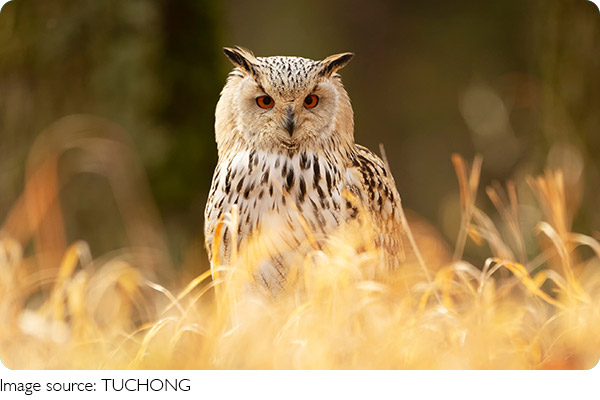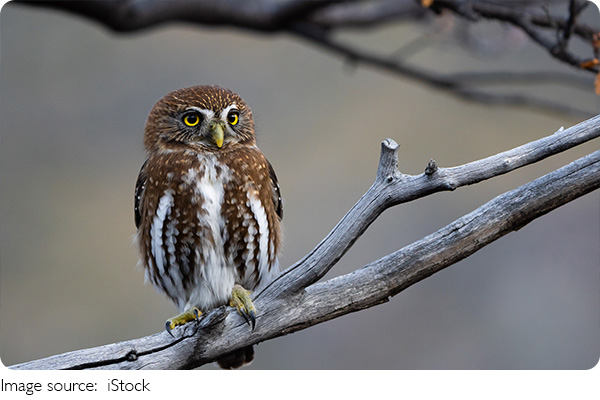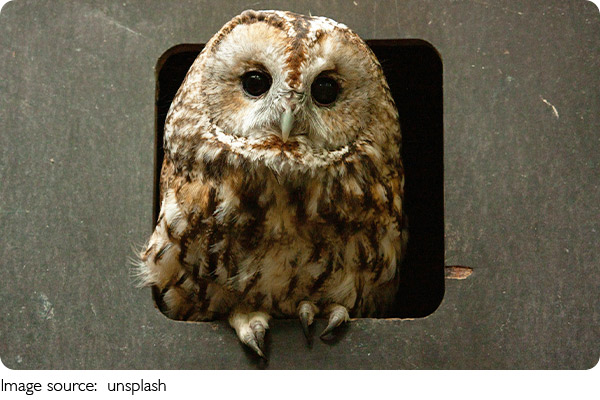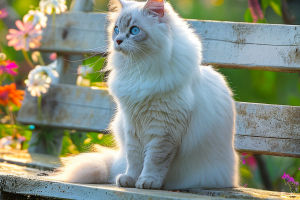Owl Love Calls

We might think those haunting hoots are spooky or mysterious, but actually—they're full of meaning. When owls call out at night, they're often not trying to scare us.
They're trying to find a mate! That's right, those loud hoots in the dark are part of their love language. Let's explore how owls use their voices to find love in the quiet hours of the night.
Nighttime is their prime time
Owls are known for being night birds. While the rest of the world sleeps, they're wide awake—and that includes their romantic lives. Unlike animals that rely more on bright colors or scent to attract a partner, owls mainly use sound. Their voices carry far in the night air, and that makes calling out the perfect way to connect with a potential mate.
What exactly do they say?
Each species of owl has its own signature hoot or call. Some make deep, slow sounds like "hoo-hoo," while others chirp, whistle, or screech. The male usually starts first, calling loudly to say, "Hey, I'm here and ready to mingle!"
But it's not just about being loud—it's about rhythm, tone, and pitch. Think of it like singing a love song. A strong, smooth hoot tells a female that the male is healthy, alert, and confident. If a female likes what she hears, she may hoot back in response. That's when the duet begins.

It's more than just noise—it's strategy
These calls aren't random. Male owls choose safe, open spots where their voice can travel farther—like from a tree branch or the edge of a forest. They also repeat their calls in a steady rhythm to stand out from other sounds in the night.
Timing matters too. Many owls prefer calling just after sunset or before dawn when the world is extra quiet. That's when their voices echo best, reaching across trees, valleys, and even towns.
When two owls hit it off
Once a female responds, the two owls may call back and forth for several nights. This isn't just for fun—it helps them build trust. Over time, the calls become softer, more gentle, and closer together. It's their way of bonding and saying, "We're a pair now."
If the connection is strong, they may nest together and raise owlets. In some species, the pair even stays together year after year, calling out to each other every mating season to reconnect.
Different hoots for different roles
Not all hoots mean love. Some are used to mark territory, warn off other males, or alert a partner about danger. But during courtship, the tone changes—it's softer and more inviting.
Some owls, like barn owls, don't hoot at all. Instead, they make raspy screeches that might sound scary to us, but to another barn owl, that's the sound of charm.
Silence can be risky
If an owl doesn't call out, it might be overlooked completely. So even though hooting can attract predators or competitors, owls take the risk for the chance at love. A bold voice can mean the difference between being alone or finding a lifelong partner.

Why this matters to us?
Understanding owl hoots helps us appreciate the world at night. These calls aren't just background noise—they're love stories playing out under the stars. The next time you hear one, try to imagine the owl on a branch, singing its heart out for a chance at connection.
And with habitat loss and noise pollution growing, some owls struggle to find each other. That's why keeping quiet green spaces matters—not just for sleep, but for owl romance too!
So, Lykkers, have you ever heard an owl's love call?
Next time you're lying in bed and hear that "hoo-hoo" echo through the night, remember: it might just be a love letter floating through the air. Would you answer if someone sang a song like that for you? Tell us in the comments what kind of "call" you'd send if you were an owl! 🦉🌙
-
 Emotional Animal LivesThis Is What Anxiety Looks Like in Animals—It’s Devastating!
Emotional Animal LivesThis Is What Anxiety Looks Like in Animals—It’s Devastating! -
 Animal Navigation SecretsExploring how animals navigate vast distances without maps, relying on natural cues and instincts to guide them.
Animal Navigation SecretsExploring how animals navigate vast distances without maps, relying on natural cues and instincts to guide them. -
 Healthy Pet EssentialsNot sure what health items your pet really needs? Let's walk through the must-haves and how to choose them smartly!
Healthy Pet EssentialsNot sure what health items your pet really needs? Let's walk through the must-haves and how to choose them smartly!